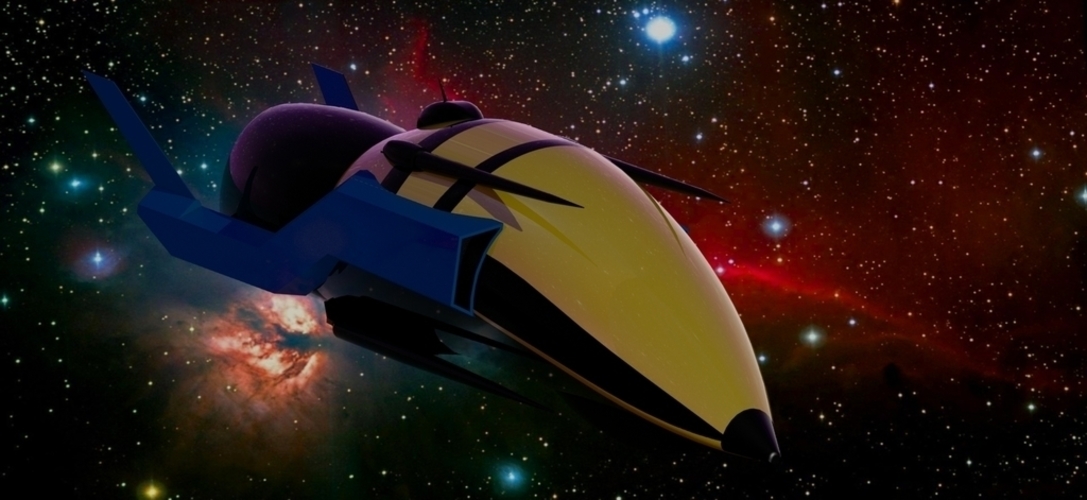
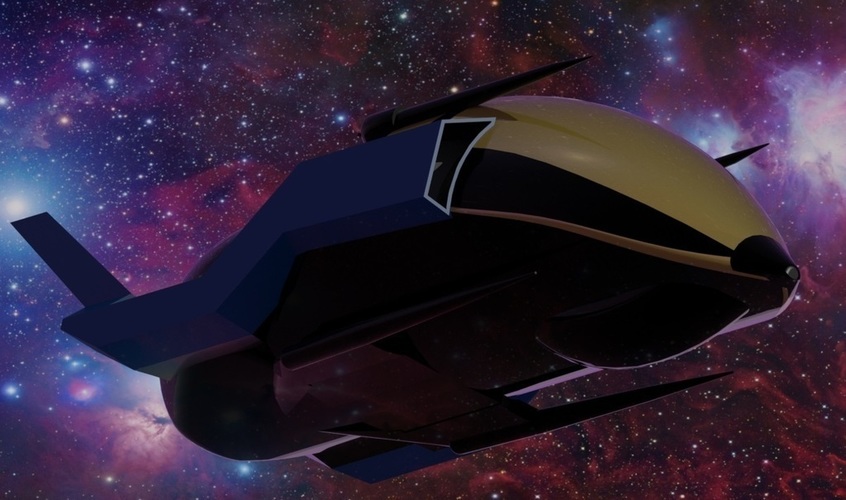
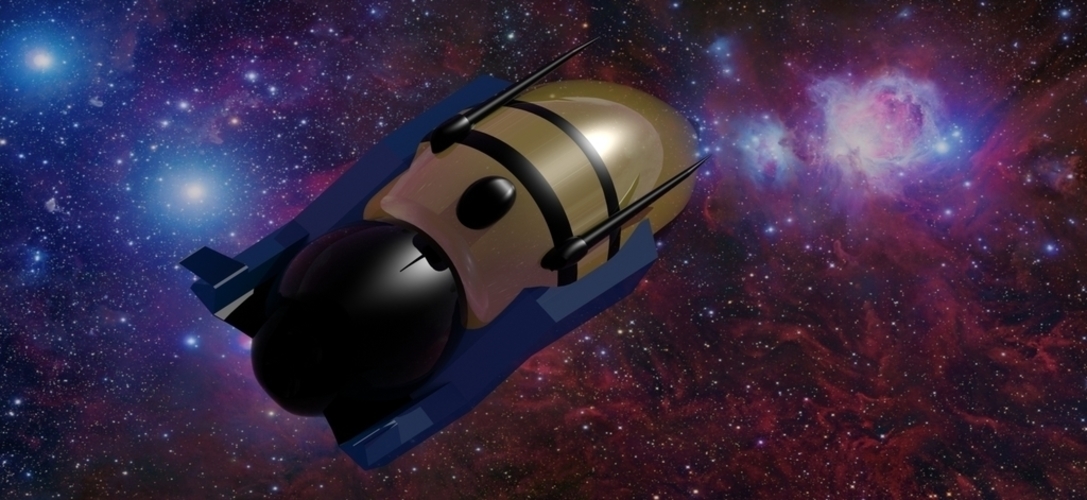
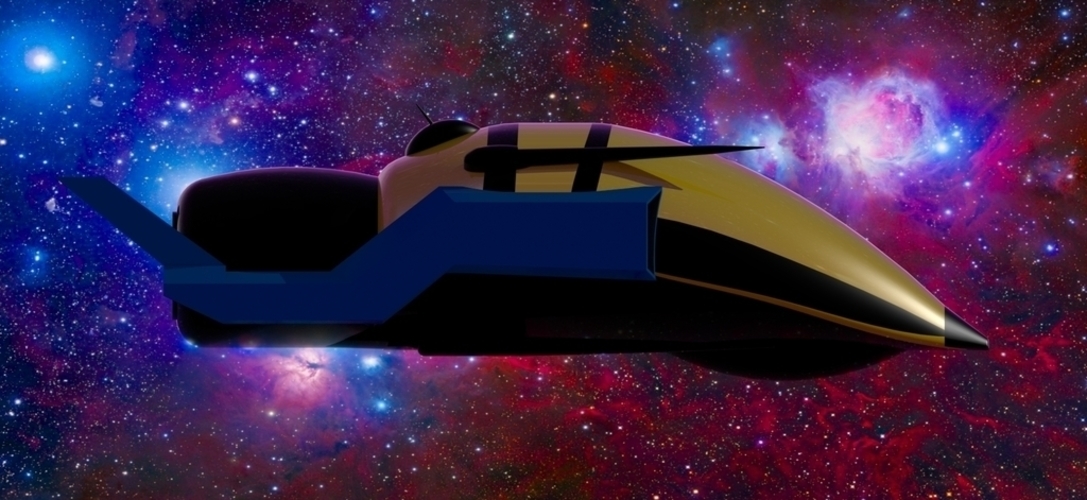
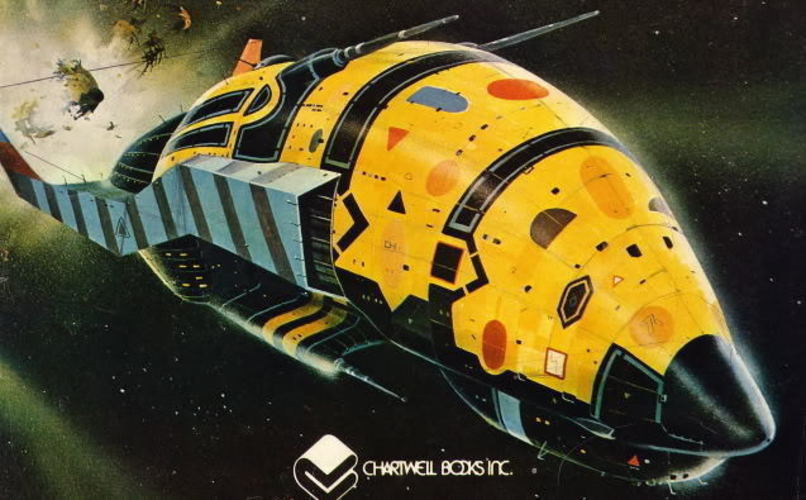

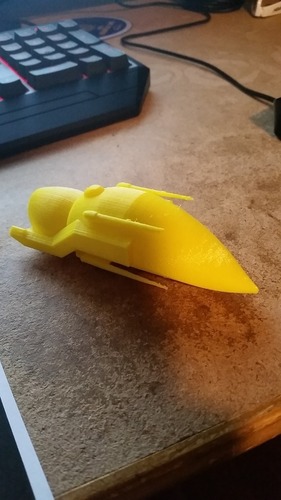
Prints (0)
-
No Prints Yet
Be the first to upload a Print for this Design!
Description
Summary This space fighter is from the book Spacecraft 2000 to 2100AD by Stewart Cowley. I take no credit for this design, I made this in my free time to have model for 3D printing. This is an early version and it will be improved over time. There's a crappy animation attached as well. Book description: "By the time the TDA 107 Partisan was finding itself outclassed by the new generation of enemy interceptors such as the Shark, Avery Astronautics were already testing a prototype for a replacement. Although they had not been asked to tender for such a contract they had seen the need coming and had decided to initiate a development programme as early as 2055. Terran Defence Authority representatives were invited to a display a year later and within a week the first order was placed, the Avery Hornet going into full production. The first squadron went into action in mid-2057 against a strong Proxima seek-and-destroy patrol and was an instant success, destroying four enemy ships against the loss of one Hornet. The Hornet was fast and highly maneuverable and, unlike the Partisan, carried a hard-hitting weapon pack. Additionally, the Hornet's Armour was not only of a higher quality than that of its predecessors, but also borrowed from the enemy's K4 Interceptor, the idea of articulated platelets to give flexibility to the hull. Extremely popular with the front line flight crews, the Hornets did much to boost morale at a time when the enemy seemed to be gaining in technological superiority. The introduction by the Proximans of the new Shark interceptor had dramatically increased their defensive and offensive capability and the appearance of the Hornet came as an unpleasant surprise. Although the enemy ship was certainly the faster of the two, the Hornet's superior armament earned the ship among the enemy crews the nickname 'Sklathill', which roughly translates as dangerous fish or water creature. Rather ironically, the high degree of technological sophistication on both sides allowed a minor design aspect of the Hornet to give the ship an important advantage. The two upper laserlances were mounted at a pronounced angle to the directional line of the hull, permitting the ship making the attack to begin its escape turn fractionally before firing. To appreciate the significance of this maneuver it is necessary to remember that attacks of this kind were executed in fractions of a second. The Hornet was able to attack in any of the three following ways: by making the conventional direct line approach; secondly, by starting a direct line approach but changing course almost immediately to bring the upper armament to bear; and thirdly, by attacking along an oblique line. The result was that the target's plotting computers had to calculate three sets of possibilities instead of only one, and the milliseconds of delay thus incurred were often enough for a Hornet to make a successful attack unscathed. As a deep space interceptor the Hornet was equaled but never surpassed by any equivalent enemy ship, and it remained a Status One warship throughout the War. Still in limited production today, it is standard equipment for all second-line defense units and can still often be seen on patrol." AGAIN, I do not take credit for Mr. Cowley's work I am only sharing this model I made. If you are using a maker bot you can scale the model down to the size you desire. I have now 3D printed the model, I actually did that a while ago but I just never got to uploading the picture. Enjoy! How I Designed This I made this in my spare time in Pre Engineering using the educational edition Solid works. I remembered this old book I had growing up about weird 70's spaceships and a prediction of the future like no other. The Hornet is my favorite from the book and I started working on it from Google images. Later, I actually found the book again. Very few people know of this book's existence but to the few who do I hope you enjoy this model.
Comments